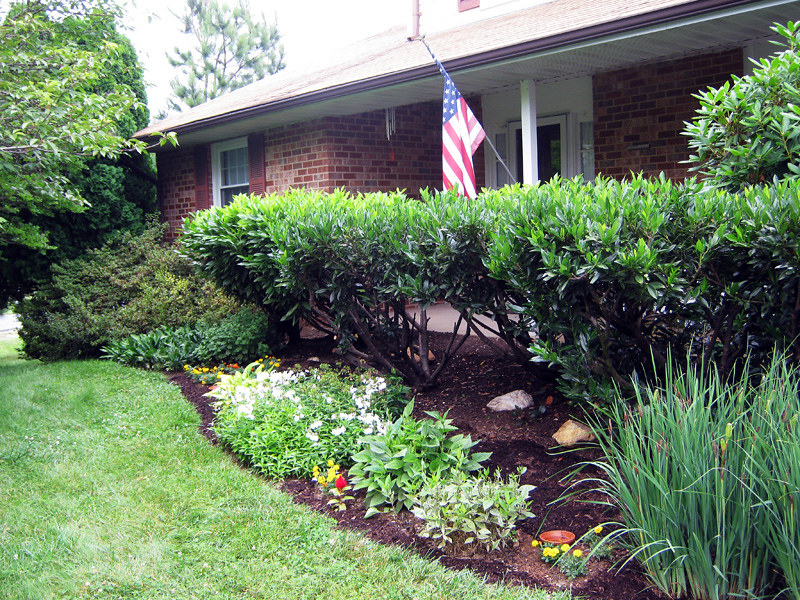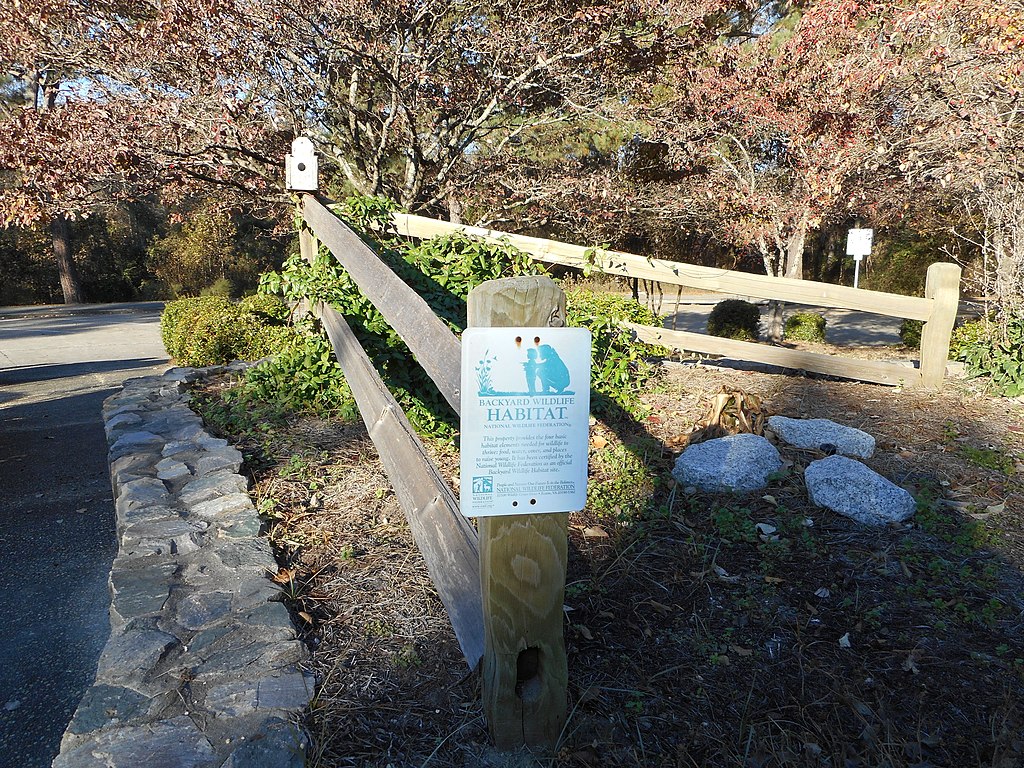If you’re gardening to help wildlife and your larger local ecosystem, having a smaller yard may seem like a major hindrance.
Can you even make that much of an impact without acreage or a larger property?
We’re here to say that yes you can!
But there are specific things to do, ranging from the plants you choose to the manner in which you garden, that you should keep in mind when going for the biggest positive environmental impact you can have.
One of the most crucial principles is to select plants native to your area. Read our article about why native plants are important if you need a refresher on their wildlife benefits.
But beyond that, what else should you do?
Plant a Tree (Big or Small)
Planting a tree is one of the best things you can do for wildlife in your yard. The simple fact that they grow tall allows you to take advantage of all that vertical space that would otherwise remain unused. And trees bring benefits that are unmatched by any other type of plant, from their value to critters as food, shelter and more to their ability to sequester carbon.
With a smaller yard, you might not think adding a tree is realistic. But there are a few things you’ll want to think about.
First, if you’re worried about the tree shading your yard and limiting your ability to grow a wildflower garden, you can look into native shade gardens which mimic the woodlands once ubiquitous to many parts of the United States. The plants available to you are diverse and beautiful, and shade gardens still support bees and other wildlife.
You’ll need to do an analysis of your yard to see how best to fit a tree. As one design guide put it, “Selecting one for a small backyard can anchor the rest of its landscape and even act as a focal point for decor. But it has to be just the right size—too big and the tree will swallow up the scene, and too small and it will appear as an afterthought.”
You also want to consider any other goals you might have (like keeping a particular part of it for full sun gardening). Plus, in many cases some of your yard will already be shaded by neighboring tree or structures, so adding another tree won’t sacrifice anything.
Oak trees are the best to plant for wildlife benefits and also one of the best for carbon sequestration, due to their sweeping canopies and big leaves which trigger more photosynthesis. Another top carbon-absorbing tree is the American sweetgum, and pine trees are one of the best for conifers.
But if a smaller tree is the limit of what your smaller yard can fit, try something like a flowering dogwood which gives you beloved white blooms that give you the main benefit of invasive ornamental pear trees without the ecological damage, plus dogwoods sequester more carbon than expected for a tree of their size.
Eastern redbud is another great small tree native to much of the United States with showy pink blooms (not many native trees flower in colors other than white). And Western Redbud is a similar option for those in the American Southwest.
Utilize Keystone Plants to Drive Food Webs
Another key to maximizing your smaller garden space, applicable with trees and shrubs as well as herbaceous perennials, is to prioritize keystones, which are defined as “species on which other species in an ecosystem largely depend, such that if it were removed the ecosystem would change drastically.”
For example, the preferred food for songbirds, and especially their young, is not birdseed from feeders but rather caterpillars, most of whom only can survive on particular plants. Keystone species are ranked by the number of butterfly/moth species whose larvae feed on its leaves (as well as the number of specialist bees that feed on its nectar).
So even if you only have enough space to squeeze in a few plants, these choices will have an outsize wildlife and ecological benefit.
For most regions, goldenrods (Solidago) and asters (Symphyotrichum) are firmly at the top of the keystone species list for flowering perennials, so these plants give you major “bang for your buck” in a small garden.
Each has a wide variety of species you can choose from based on what will thrive in both your area and particular garden spot, as well as what you find to be the most beautiful.
Following those are sunflowers (helianthus) and rudbeckia (black eyed susans), other great ideas to add to a smaller garden.
The trees mentioned in the previous section all rank highly as keystone species. Oaks (Quercus) support a staggering 456* butterfly-moth species. (And you can find oaks that aren’t so massive in size, like the chinkapin oak at 40-50 in height. The gambel oak is a small tree at 10-30 feet native to AZ, CO, NM, NV, OK, SD, TX, UT, WY.)
Other good choices are Maple (Acer) – 255 butterfly-moth species, Hickory (Carya) – 231 (A shagbark hickory grows tall but typically without a very large spread), Birch (Betula) – 274 species.
For yards too small for any of these, some of the best smaller trees and shrubs include Cherries (Prunus) – 345 butterfly/moth species, Willow (Salix) – 299 and Apples (Malus) – 245 species.
Another shrub high up on keystone lists is Vaccinium (various blueberry, bilberry, huckleberry species).
(*Note: these numbers are general and do vary by ecoregion; take a closer look at your area here)
Other Native Gardening Tips for Limited Spaces
Another important gardening practice for small gardens is to ensure you have something blooming every season which benefits the full spectrum of native wildlife.
This might look like spring ephemerals in the shady area under your tree (which itself may flower in spring), followed by perennials in a sunny area to take you through summer and fall, with seedheads remaining in winter to help sustain birds and provide additional cover. Don’t forget to consider native grasses or sedges which can provide both food and cover.
If you don’t think you have enough appropriate space for all of this, you may be able to get creative. If you only have paved yard spaces or a tiny slice of yard that gets full sun, can you place a few containers there and fill them with natives? What about a hanging basket or two?
Our final tip is to utilize wildlife-supporting gardening practices. These include refraining from using pesticides and fertilizers, leaving the leaves in place through winter and spring to support overwintering insects, and providing a water source, which by no means has to be a full-blown pond and could be a small birdbath or something as simple as as a small kettle, urn or glazed pot.
The ideas we’ve shared in this article, in fact, make up the main criteria for the National Wildlife Federation’s process for certifying your yard as a wildlife habitat (Food, Water, Cover, Places to Raise Young, Sustainable Practices) which is certainly achievable in almost any sized yard!
We hope these ideas give you some inspiration for planting native in your small yard. If you have additional tips, please share them in the comments!


Leave a Reply